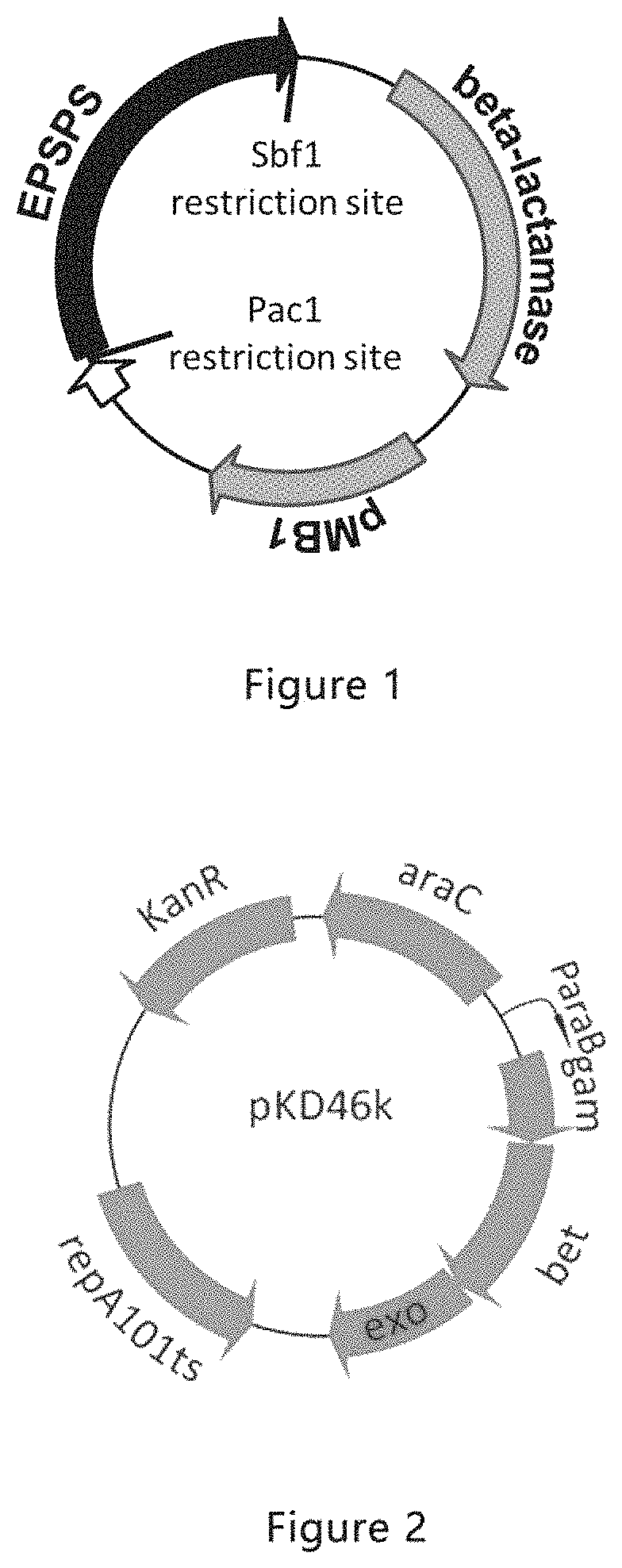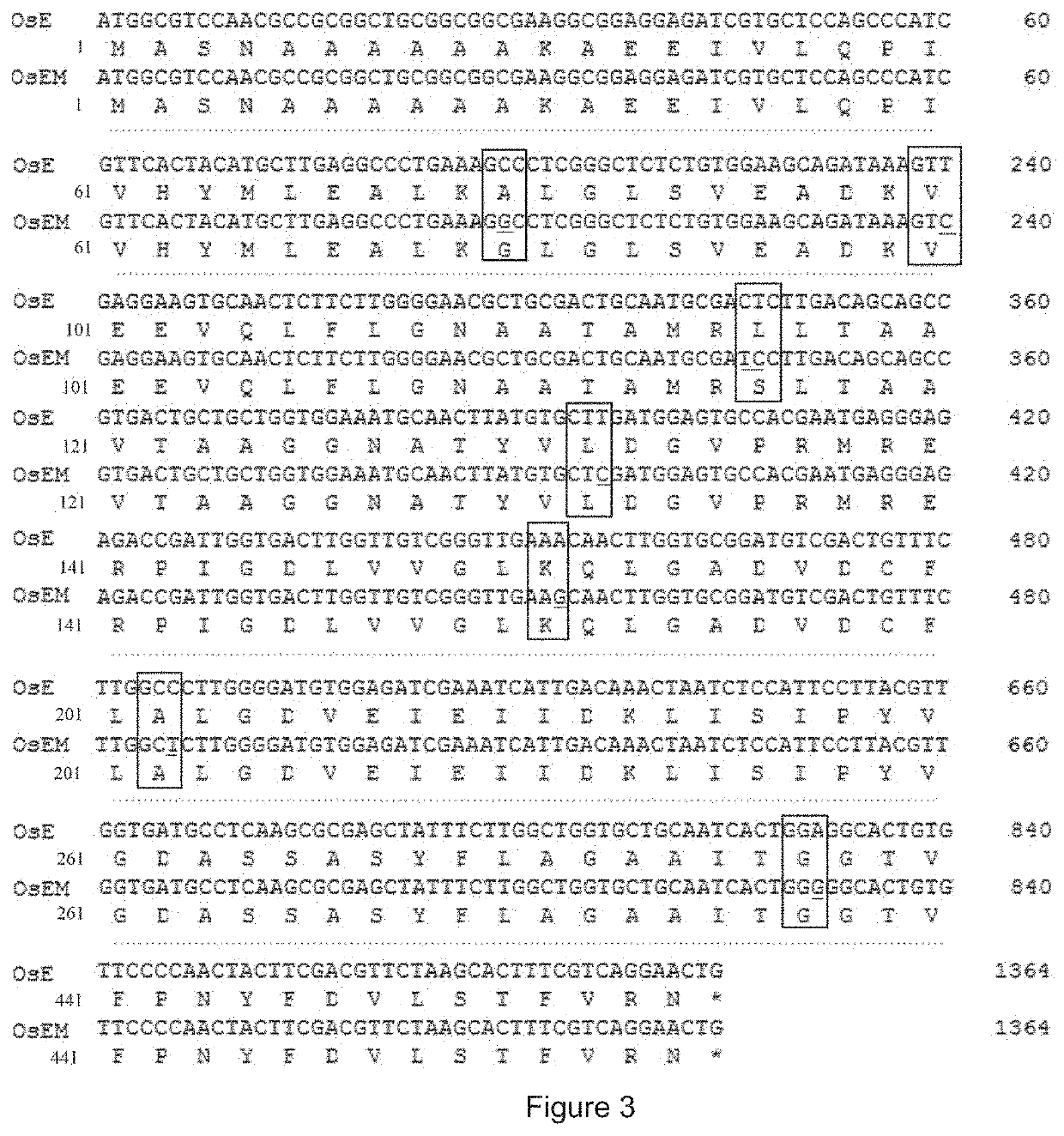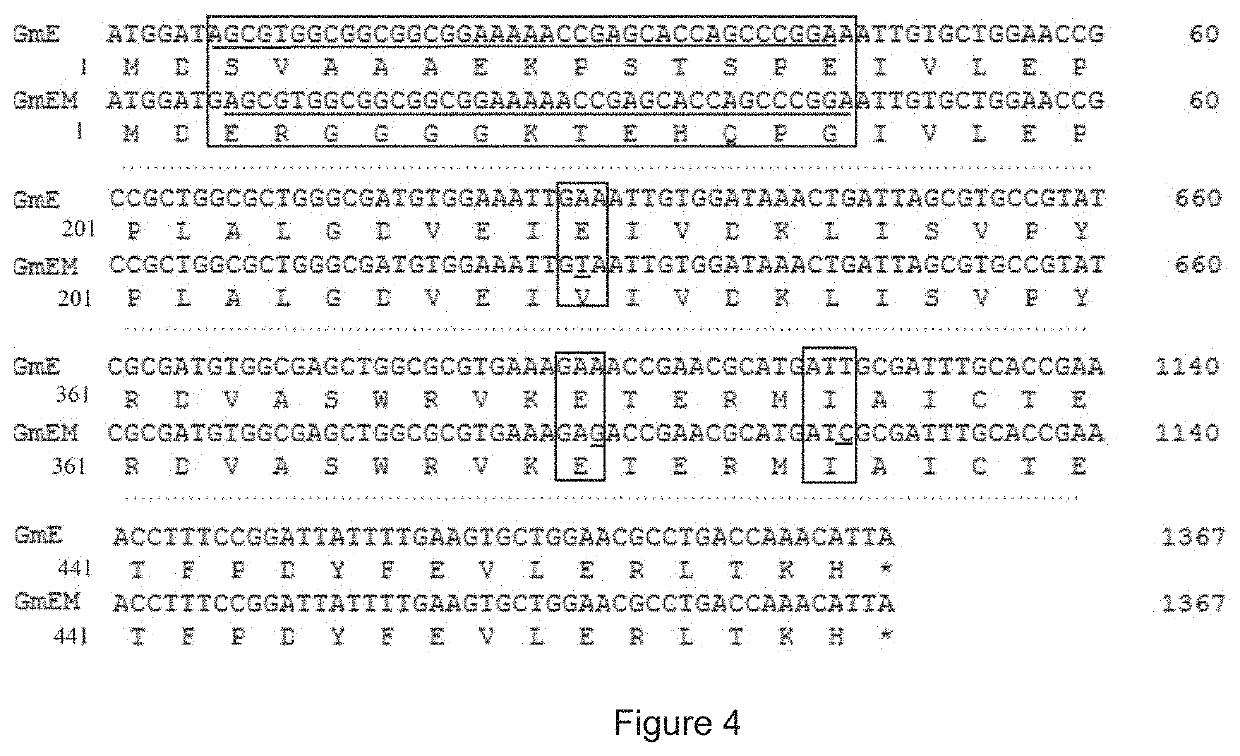Glyphosate-resistant gene screening method, EPSPS mutant gene and deficient strain and use
a technology of glyphosate resistance and screening method, applied in the field of biotechnology, can solve the problems of affecting the development and commercialization of transgenic technology, affecting the use of crops, and affecting the general public, and achieves the effects of small space, fast reproduction speed, and short period
- Summary
- Abstract
- Description
- Claims
- Application Information
AI Technical Summary
Benefits of technology
Problems solved by technology
Method used
Image
Examples
example 1
[0049]The screening method provided by the present disclosure is further described in details in the present example wherein Oryza sativa was used as the target plant, the exogenous EPSPS gene was Oryza sativa EPSPS gene (see SEQ ID NO.1 for its nucleotide sequence), and an EPSPS gene-and-C-P lyase genes-deleted strain obtained by knocking out the EPSPS gene and C-P lyase genes in wild type E. coli DH5α using homologous PCR fragments was adopted as a host strain. See Table 1 for the names and their nucleotide sequences of primers used in the present example.
[0050]Step 1, is to directly knock out the EPSPS gene and C-P lyase genes in E. coli DH5α using homologous PCR fragments.
[0051]1. Knocking Out the C-P Lyase Genes in E. coli DH5α
[0052](1) Amplification of Homologous PCR Fragment
[0053]Forward primer CPF2 and reverse primer CP5HA3 (see Table 1) were used to conduct PCR with wild type E. coli DH5α being used as a template. The gel was used to purify the PCR product, named as CP5HA f...
example 2
[0092]The screening method provided by the present disclosure is described in the present example wherein Glycine max was used as the target plant, the exogenous gene was Glycine max EPSPS gene (see SEQ ID NO.5 for its nucleotide sequence), an EPSPS gene-and-C-P lyase genes-deleted strain obtained by directly knocking out the EPSPS gene and C-P lyase genes in wild E. coli DH5α using homologous FRT method was used as a host strain. See Table 3 for the names of primers used in the present example and their nucleotide sequences.
[0093]Step 1, is to knock out the C-P lyase genes of the E. coli DH5α.
[0094]The EPSPS gene and C-P lyase genes in E. coli DH5α strain were knocked out using FRT method. The knock-out was carried out in two steps. The C-P lyase genes was knocked out first, and then the EPSPS gene was knocked out.
[0095]1. Preparation of E. coli DH5α Competent Cells Containing pKD46 Plasmid
[0096]0.5 μL of pKD46 plasmid (see FIG. 2 for its structure) was used to transform E. coli DH...
example 3
[0141]The present example provides a knock-out strain. Specifically, the knock-out strain is an EPSPS gene-and-C-P lyase genes-deleted strain. The EPSPS gene-and-C-P lyase genes-deleted strain is obtained by knocking out the EPSPS gene and C-P lyase genes in any one of E. coli DH5α, TOP10 and BL21 by a gene knock-out technology. Specifically, the gene knock-out method used in the present example is same as that used in Example 1 or Example 2.
[0142]The EPSPS gene-and-C-P lyase genes-deleted strain provided by the present example may be applied in testing the functions of EPSPS gene from a target plant. Specifically, the EPSPS gene-and-C-P lyase genes-deleted strain of the present example is used as a host strain. The EPSPS gene from the target plant is introduced into the host strain which are then placed on basal culture media being free of amino acid or protein i.e. limiting culture media for culture. It is demonstrated that the EPSPS gene from the target plant is capable of expres...
PUM
| Property | Measurement | Unit |
|---|---|---|
| temperature | aaaaa | aaaaa |
| glyphosate resistance | aaaaa | aaaaa |
| resistance | aaaaa | aaaaa |
Abstract
Description
Claims
Application Information
 Login to View More
Login to View More - R&D
- Intellectual Property
- Life Sciences
- Materials
- Tech Scout
- Unparalleled Data Quality
- Higher Quality Content
- 60% Fewer Hallucinations
Browse by: Latest US Patents, China's latest patents, Technical Efficacy Thesaurus, Application Domain, Technology Topic, Popular Technical Reports.
© 2025 PatSnap. All rights reserved.Legal|Privacy policy|Modern Slavery Act Transparency Statement|Sitemap|About US| Contact US: help@patsnap.com



